
In an era of rapidly accelerating digital transformation, IT decision-makers are entrusted with the essential responsibility of ensuring the resources and expertise needed for its smooth and successful implementation within organizations. Furthermore, these key-position professionals continuously take charge of ongoing internal IT operations and software development projects by making fundamental decisions. Those responsibilities, however, are inevitably accompanied by various IT challenges and roadblocks that a vast majority of IT leaders across the globe face alongside their day-to-day duties.
Top Challenges Faced by IT Decision-Makers in Organizations
Rapidly Growing Business and IT Needs
Expanding business needs and client demands have always directly impacted an organization’s technological capacity and expertise requirements.
IT decision-makers and their teams face escalating and constantly changing demands. IT challenges include the adoption of innovative technology, the development of new software products, the modernization of applications, the expansion of IT teams, and other advances made necessary in the current business climate.
Heavy IT Department Workload
Arising from an increase in business requirements, workloads often escalate beyond the technical and human resource capacities of an organization’s IT department. Therefore, IT decision-makers begin to encounter issues such as task overload, an inability of teams to catch up with the elevated demands, and project timeframe pressures. Employees can also be negatively impacted by altered working conditions, many of them suffering burnout syndrome as they experience a more stressful working environment.
Technical Skills Gaps
Another major challenge commonly faced by IT leaders across the globe is the shortage of resources with the specific technical expertise needed to meet the pending IT project demands of an organization.
Lack of critical technical skills may give rise to problems such as delays in service, dissatisfied clients, loss of clients, inability to win new clients, and missed income. Therefore, a company’s business goals and results will be negatively impacted.
Recruitment Roadblocks
A further barrier impeding a smooth IT leadership process is finding and recruiting resources with the necessary technical skill sets. IT decision-makers very often struggle to locate the right resources due to limitations in local talent pools. Therefore, they find themselves unequipped and unprepared to meet project requirements and deadlines.
A study by Global Knowledge demonstrated that talent recruitment and retention are major challenges for IT leaders, with 50% currently struggling in this area. In the published results of the study, only 7% of IT decision-makers shared that hiring had been an easy process.
Budget Constraints
Budgets tend to be another important concern of an organization’s IT leadership representatives. Restricted by enforced budget limitations, IT decision-makers frequently deal with a shortage of the financial resources needed for ongoing staff training, recruitment, and hiring of senior-level professionals. As a result, leaders face the need to search for more cost-effective solutions for their IT departments.
IT Staff Augmentation as a Fundamental Solution
The above-described obstacles are often determining factors in the successful operation of an IT department, as well as an organization’s overall business objectives. Accordingly, an increasing number of leaders across the globe turn to IT staff augmentation to find an efficient solution to their in-house IT challenges and deficiencies.
The staff augmentation engagement model ensures a fast and high-quality ramp-up of a company’s IT department at an optimized cost. This allows for the expansion of technical capacities and provides the necessary expertise and skill sets, adding value to the business organization.
Business Advantages Obtained through IT Staff Augmentation
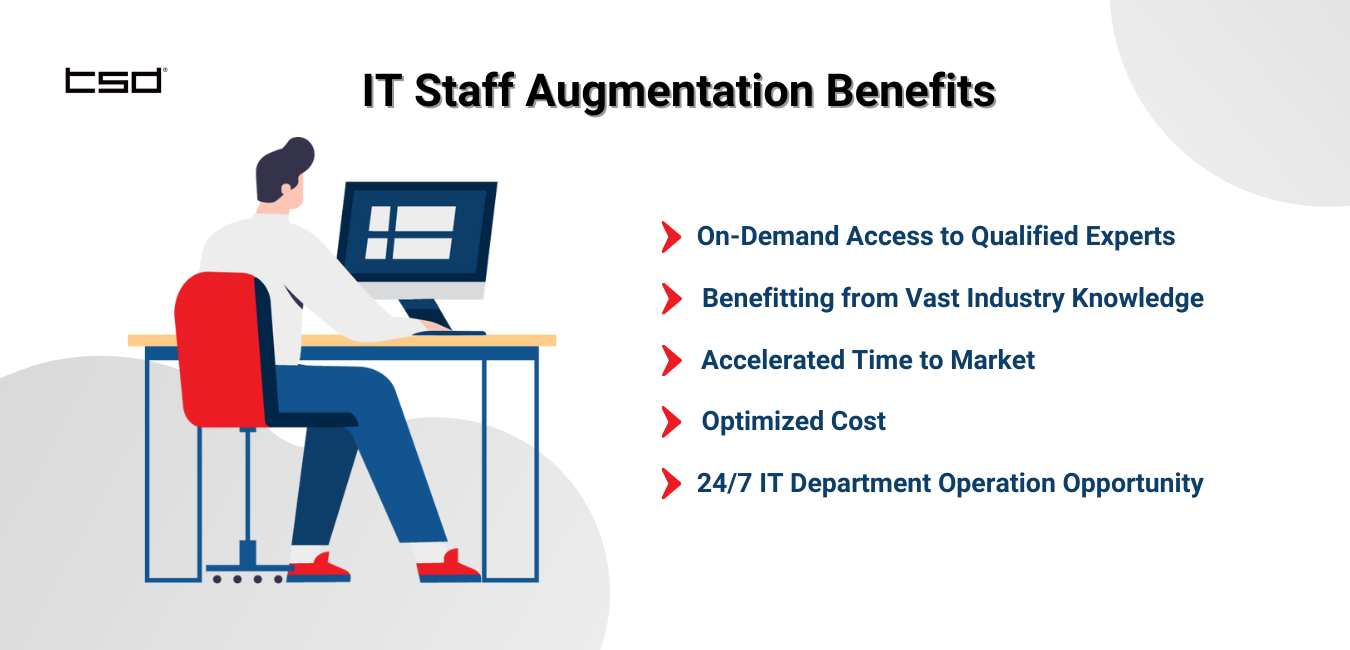
On-Demand Access to Qualified Experts
Among the top reasons that IT leaders choose to extend their internal teams with outsourced staff is the opportunity to directly benefit from highly competent professionals in-house. For instance, according to Finance Monthly, nearly half (49%) of senior decision-makers in financial service organizations across the US and Europe reported that they prefer to have qualified experts as one of their main drivers for using third-party IT services.
Benefitting from Vast Industry Knowledge
When facing a shortage of specific expertise within an internal IT team, especially when information technology is not the core business activity of an organization, the opportunity of benefiting from rich industry know-how provided by staff augmentation has proven to be invaluable. The collaboration model empowers companies with the capacity, efficiency, knowledge, and skills needed to solve many technical and business challenges and meet goals with ease.
In the survey conducted by Finance Monthly, 48% of decision-makers stated that a third-party service vendor provided industry-specific knowledge they could use to their advantage. This was pointed out as one of their main drivers for adopting standard outsourcing services.
Accelerated Time to Market
Scaling an IT department and extending a technical team can efficiently speed up an organization’s time to market. Hence, the contribution of outsourced team members enables a business to rapidly develop, test, deliver, and support a final product or service for its customers, thus elevating the satisfaction levels of current clients, obtaining new client wins, and leading to an increase in ROI and boost in overall business results.
Optimized Cost
The team extension model allows companies to generate considerable savings from expenses related to recruitment, infrastructure, and additional costs for employee benefits, relocation, and office maintenance.
Considering the above-mentioned standard budget savings, along with the fact that the cost for an outsourced resource is significantly lower than the average salary of an on-site employee, organizations typically save up to 50-60% on overall development costs by leveraging staff augmentation.
Therefore, cost is an important factor IT leadership representatives must consider when deciding on engaging with an external IT services provider. Of the decision-makers who participated in the survey by Finance Monthly, 48% specified that cost-effectiveness was among their key reasons for choosing an outsourced solution.
24/7 IT Department Operation Opportunity
When augmenting an in-house technical team with offshore resources located in a favorable time zone, there is a real opportunity for the organization’s IT department to maintain a continuous work cycle. In other words, important IT operations can be covered by outsourced team members during non-overlapping hours, at night, or on holidays. This option is quite useful if a company’s technical department has critical ongoing tasks concerning, for instance, application support or infrastructure monitoring. By this approach, IT leaders have the peace of mind that everything within the department’s workflow is covered in a timely and secure manner and all potential issues are efficiently handled.
Need to learn how staff augmentation can fit into your business scenario and solve your specific IT challenges?

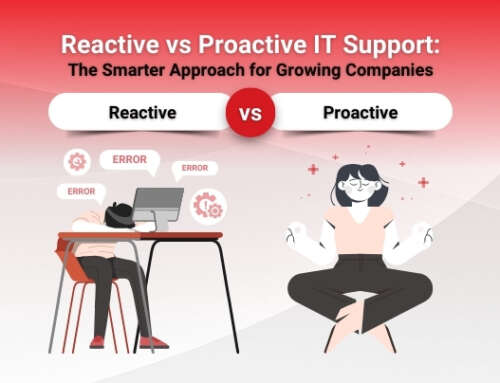

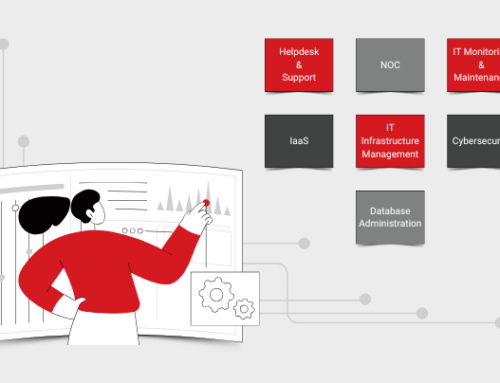
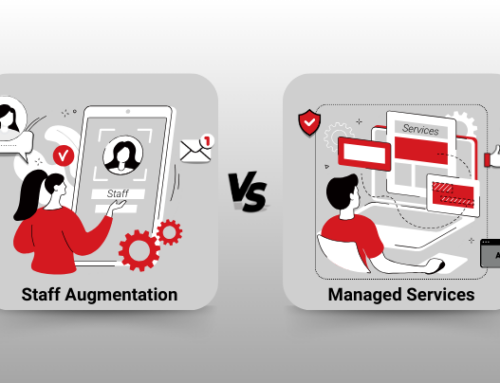
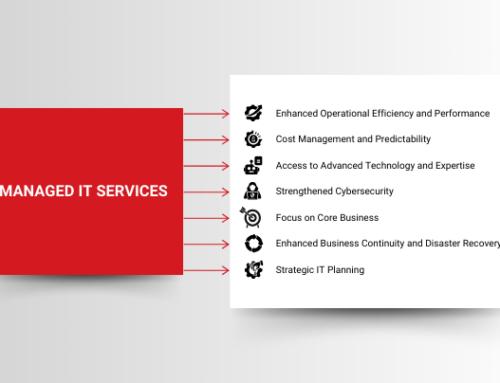


Leave A Comment